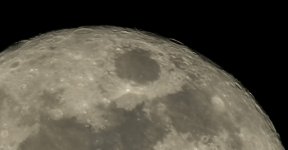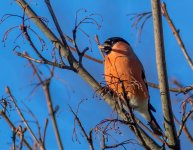Carlos,
The link just takes me to the 500px main page.
sorry
try here
https://500px.com/cango
last two ones/or first
Carlos,
The link just takes me to the 500px main page.
Weird. I still get just the main page.
https://marketplace.500px.com/?utm_...bpQ&siteID=je6NUbpObpQ-yKjwTkbllBmN3.s1YILlyQ
Carlos,
The link just takes me to the 500px main page.
Same here, had to lookup cango and take it from there. Nice Kingfishers.
Just came home from Sri Lanka.Just to let you know I am now the proud owner of a 400/5.6 USM and a metabones adapter :t:
Quick field test confirms it works fine. It will come in handy when I visit Sri Lanka early next year. Better than the 50-200SWD + EC20.
I will also bring the scope to cover situations calling for long reach. Either the TL APO804 +EC14, or the good old SW80.
that's weird. it should work.
well, you give me no choice. here are they.
On a duck shot with lots of water dropplets, saw practically no CA at all. Though I did not went over it "forensically", so to speak...
Just came home from Sri Lanka.
The 400/5.6 USM + metabones was put to serious field test. I am really pleased with the results (will post later), though I identified two issues with the setup.
At occasion, the AF will refuse to work if it fails in acquiring focus in the first place. The only remedy is to switch camera off/on. Or to focus manually. I missed a few precious shots until I got the feeling when the setup had entered such a state.
Quite often you need to shoot two or three frames to get one with focus spot on. Even after getting AF confirm beep and light, it seems that focus is slightly changes between frames, just a little but enough to turn a great shot into an acceptable one. In many cases though one shot is enough. I would assess the keeper rate is 2 pin sharp out of 3 frames, sometimes 1 only, sometimes 3, but never 0. Strange.
The EM1 IBIS does a great job with this lens. Was able to shoot handheld with shutter times as low as 1/25 s with more than acceptable results. Great for early morning/late afternoon photography.
I also brought the SW80, but the results I got were clearly inferior to the 400, with a few exceptions. Operating it from jeep was hardly feasible, due to the sheer length of the scope. I should have brought the TLAPO804 instead...
Hi Carlos,ok. good to know. I won't be trying to take it apart - done that with a previous scope's crayford and f***ed that up, förlåt min franska. Still have the lens cell of a TS scopos 80/560mm triplet apo (so it says) don't remember the f-number though. That one was a splittable tube also. At the time did not know about flatteners and reducers, so did not know what to do with the splittable design
Hi Carlos,
I just recall sending an email to Teleskop Express support, asking about reversing the focuser axis L/R. .
Nice and sharp. Well done !
The shallow DOF is a blessing and a curse at the same time, isn't it?I won't bother with it. Yes, I did the 180 turn around, and it's a bit awkward, though it works. Not sure how it works handheld.
What will take some use to, is the shallow dof for focusing. I striped down and old OM lens (3d party) to get the helical focuser as well as the diaphragm for stopping down. But the hole was to narrow and not at the right position I guess., so it vignetted quite a bit.
With the scope came a screw on lens lock. Would it be wiser to stop it down there - by cutting a hole, say 70mm? Thus if I have good light, I just could screw it on/off and not worry about vignetting.

Dan,Tord,
I have not experienced and focus refusals. Maybe a contact problem?
I think the camera wants to re-affirm focus with each shot, and that takes a little time. Maybe only a fraction of a second, but still, it seems to want to make sure and that means backing off and going back in. I notice it more in bad light as would be expected. So it is entirely possible that it finds other parts of the image within the small focus area to concentrate on. The tests I have done on a tripod for focus consistency score 10 out of 10. Hand held there is always going to be a little discrepancy.

You shoot single frames... Could use of multiple frames explain the difference in AF accuracy? When photographing perched birds, I usually short a burst of ~3 frames in L-fps to increase chance that at least one frame will sharp, in focus, with a nice posture, open eyes etc. I think I have set the camera to 3fps.Yes, single small, but sometimes single normal. Acquire and recompose unless there is time to move the point. Single frames.
...
